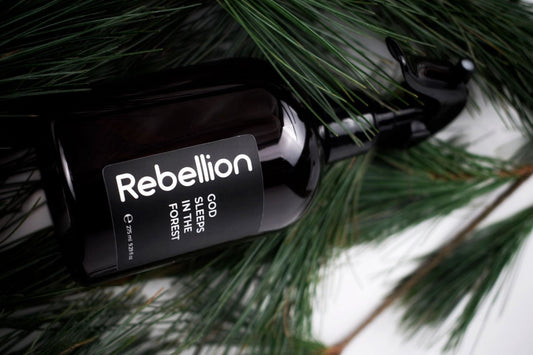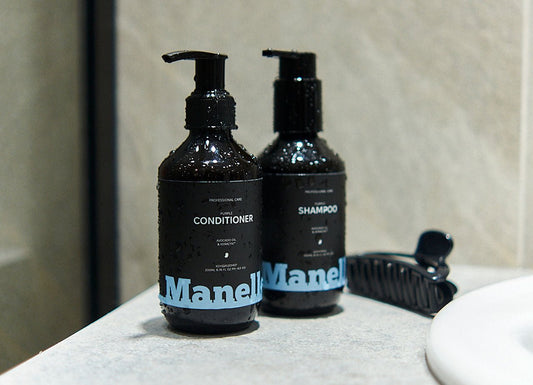
Glycolic acid: Why it should be included in your skin care
Glycolic acid for the face is one of the most popular ingredients in cosmetology. It is included in peels, creams and serums, helping to even out skin tone, fight acne and signs of aging. It is one of the key ingredients in facial care, helping to renew the skin, even out tone and fight imperfections. In this blog, we will analyze in detail what glycolic acid is, how it works, who it is suitable for and how to use it correctly.
Glycolic acid: what is it and how does it work?
Glycolic acid is an organic compound belonging to the class of alpha-hydroxy acids (AHAs) and is one of the most effective acids in cosmetology. It is of natural origin, as it is obtained from sources such as sugar cane, beets and grapes. Due to its low molecular weight, glycolic acid easily penetrates the deep layers of the skin, affecting it at the cellular level. This makes it extremely useful for skin care that needs renewal, even tone or elimination of imperfections.
The main mechanism of action of glycolic acid is its ability to break down the bonds between dead cells of the stratum corneum of the epidermis. This process effectively exfoliates dead skin cells, which helps accelerate cell renewal. Regular use of glycolic acid products results in smoother, more elastic and radiant skin. It also stimulates collagen production, which is an important factor in combating the first signs of aging, such as wrinkles and loss of elasticity.
In addition to its anti-aging properties, glycolic acid is effective in combating hyperpigmentation, acne scars, and uneven skin tone. It helps lighten age spots, reduce the appearance of scars, and even out the overall skin tone. Thanks to its ability to control sebum production, this ingredient is also beneficial for oily and problematic skin, as it prevents the appearance of comedones and helps cleanse pores. However, due to its high activity, glycolic acid requires careful use and mandatory application of sunscreen to avoid increased skin sensitivity to ultraviolet light.

Why is glycolic acid popular in cosmetology?
Glycolic acid is one of the most effective alpha hydroxy acids due to its unique combination of chemical properties and ability to penetrate deeply into the skin. Unlike other AHA acids, such as lactic or malic, it has the lowest molecular weight, which allows it to quickly overcome the barrier of the stratum corneum of the epidermis and affect regeneration processes at a deeper level. This provides intensive exfoliation of dead cells and activation of skin renewal, which leads to its noticeable rejuvenation, improvement of texture and even tone.
In addition to its deep action, glycolic acid has a wide range of applications, as it effectively solves various cosmetic problems:
- Dullness and uneven skin tone – stimulates cell renewal, promoting a healthy glow to the skin.
- Fine wrinkles and loss of elasticity – activates collagen synthesis, making the skin more elastic.
- Blackheads and enlarged pores – controls sebum production, cleanses and narrows pores.
- Smoothes out uneven texture – helps reduce acne marks and smooths skin texture.
- Hyperpigmentation and sun spots – lightens age spots, making the face tone even.
Due to its versatility, glycolic acid has become a key ingredient in skin care. It is used in toners, peels, serums and creams, providing professional care even at home. However, due to its active effect on the skin, it is important to use sunscreen after using glycolic acid products to avoid photosensitivity and maintain skin health.
Benefits of Glycolic Acid: Why Should You Try It?
Glycolic acid is rightfully considered one of the most effective ingredients in skin care. Its versatile properties make it indispensable for those who want to improve the condition of their face, even out their tone, or get rid of imperfections. Here are the main benefits of glycolic acid that make it a favorite of many cosmetologists and consumers.
Effective exfoliation: Radiance and smoothness
The main function of glycolic acid is to exfoliate dead cells that accumulate on the surface of the skin. This process makes the skin smooth, even and radiant. By exfoliating the upper layer of the epidermis, the skin looks fresh and its texture becomes more even. This is the perfect solution for dull skin that has lost its natural glow.
Pigmentation reduction: Even facial tone
Glycolic acid works at a deep level, helping to lighten age spots, post-acne and other uneven skin tone. It affects melanin, dissolving its accumulation in the upper layers of the skin. Regular use of products with glycolic acid helps to even out the skin tone, making it uniform and healthy-looking.
Skin Rejuvenation: Fight Wrinkles
Glycolic acid stimulates the production of collagen, a protein responsible for skin’s firmness and elasticity. This results in less visible wrinkles and a firmer, more toned skin. This ingredient also helps reduce the appearance of fine lines, promoting overall skin rejuvenation.
Fighting Acne: Cleanliness without breakouts
By unclogging pores, glycolic acid helps get rid of blackheads and prevent them from forming again. It dissolves excess sebum and removes impurities, which are the main causes of acne. The acid also has anti-inflammatory properties, which helps reduce redness and heal breakouts faster.
Enhancement of the action of other products: Maximum effect of care
Clean skin is better able to absorb the active ingredients in skincare products. Glycolic acid removes dead skin cells, opening up access to the deeper layers of the skin. This enhances the effects of serums, creams, and other products you use in your routine, ensuring maximum results.
Why does your skin need glycolic acid?
Glycolic acid is one of the most versatile and effective ingredients in cosmetology. Its popularity is due to its ability to solve several skin problems at once, including dullness, uneven tone, acne, pigmentation and wrinkles. This ingredient has become a real discovery for those who seek to improve the condition of their face without complex procedures or visits to the beautician. Let's take a closer look at why glycolic acid is an essential part of skin care.
Fighting dullness: bringing back a healthy glow
Dullness of the skin is caused by the accumulation of dead skin cells, which prevent the natural reflection of light and block access to the fresh layer of the epidermis. Glycolic acid removes these cells, allowing the skin to look fresh and radiant again. It helps to reveal the natural beauty of the face, making it more even and attractive. Regular use of products with this ingredient restores the radiance of the skin, which may have been lost over time due to stress, lack of care or age-related changes.
Solving acne problems: clear skin without rashes
Glycolic acid is a powerful tool in the fight against acne. It penetrates deep into the pores, dissolving the sebum and impurities that cause breakouts. Thanks to its anti-inflammatory properties, the acid reduces redness and irritation, helping the skin to heal faster. In addition, glycolic acid exfoliates dead skin cells that can clog pores, reducing the risk of new breakouts. For those who struggle with persistent breakouts or blackheads, this ingredient can become an indispensable ingredient in their care.

Skin rejuvenation: smoothing wrinkles and increasing elasticity
Age-related changes such as fine lines, loss of firmness and elasticity can be significantly reduced with regular use of glycolic acid. It stimulates the production of collagen, which is the basis of young and firm skin. Collagen not only provides elasticity, but also helps smooth out existing wrinkles, making the skin more dense. Glycolic acid also helps reduce the depth of age lines, giving the face a fresher look. Its action is aimed at a deep level, which provides long-lasting results.
Evens out skin tone: reduces pigmentation
One of the biggest benefits of glycolic acid is its ability to combat age spots and acne scars. It works by targeting melanin, the pigment responsible for skin color, lightening dark spots and evening out skin tone. This is especially beneficial for those looking to get rid of acne scars or uneven skin tone. Glycolic acid can help your skin look smoother and reduce the appearance of blemishes, even after just a few uses.
Strengthening the action of other products: maximum effect from care
Glycolic acid makes your skin more receptive to other active ingredients in your skincare products. Exfoliating dead skin cells opens the way to the deeper layers of the epidermis, allowing serums, creams, and other products to work more effectively. This helps you get the most out of your daily skincare routine without completely changing your routine. You may notice improvements in your skin condition faster than usual, thanks to better penetration of beneficial substances.
Versatility for different skin types
Glycolic acid is suitable for most skin types, if you choose the right concentration. For oily skin, it becomes a savior in the fight against excessive shine and clogged pores. For dry skin, it is a tool that removes dead skin cells, allowing moisturizing ingredients to penetrate deeper. Even for sensitive skin, there are special formulas with a low acid content that provide gentle exfoliation without irritation.
Glycolic Acid: Your Skincare Ally
Adding glycolic acid to your skincare routine can help address a range of concerns, from improving skin texture to fighting wrinkles and pigmentation. Its versatile properties make it suitable for anyone looking for a well-groomed, radiant and healthy skin. When used correctly, glycolic acid products can help you see results in just a few weeks, leaving your skin looking younger and fresher.
How to use glycolic acid correctly?
Glycolic acid is a powerful ingredient that can significantly improve the condition of your skin when used correctly. However, due to its active action, it is important to follow certain rules to avoid irritation and ensure maximum benefits from your treatment. Let's take a look at some key tips for using glycolic acid in your routine.
Start with a low concentration
If you are new to using glycolic acid, start with products with a concentration of 5-7%. This level of acid will provide gentle exfoliation without risk to sensitive skin. Once you get used to this ingredient, you can gradually move on to products with a higher concentration - up to 10-15%. This will increase the effectiveness while maintaining skin comfort. Products with high concentrations (20% and above) should only be used on the recommendation of a dermatologist or cosmetologist, as they have an intense effect and can cause severe irritation if used incorrectly.
Apply at night
Glycolic acid makes the skin more sensitive to UV rays, so the best time to use it is in the evening. Apply after cleansing, avoiding the area around the eyes and lips. This will allow the acid to work overnight, stimulating cell renewal.
Be sure to use a sunscreen with an SPF of 30 or higher in the morning, even on cloudy days. This will help prevent photodamage, which can occur due to increased skin sensitivity to the sun after using glycolic acid.
Avoid combination with aggressive ingredients
Although glycolic acid is a versatile ingredient, it should not be combined with other active ingredients in the same treatment. Avoid simultaneous use with:
- Retinol or retinoids, which can increase irritation.
- High concentrations of vitamin C, which can cause discomfort.
- Other acids, such as salicylic or lactic, as this may lead to excessive sensitivity or damage to the skin.
Use these ingredients on different days to get all the benefits without risking irritation.
Stick to the frequency of use
If you are just starting out, apply a glycolic acid product 1-2 times a week. This will allow your skin to get used to the active ingredient. If you do not experience any discomfort (redness, peeling, burning), you can gradually increase the frequency to 3-4 times a week.
For sensitive skin, use less frequently. The frequency of use depends on your skin's reaction: avoid daily use if irritation or tightness occurs.
Use moisturizers after acid
After using glycolic acid, be sure to apply a moisturizer to restore the skin's barrier function. Products with hyaluronic acid, panthenol or ceramides are ideal for providing skin comfort after active care.
How to properly integrate glycolic acid into your routine?
- Cleansing: Use a gentle cleanser to prepare your skin for glycolic acid application.
- Toning: If you use a toner, choose an alcohol-free formula to avoid over-drying.
- Glycolic acid product. Apply a thin layer of the product, following the recommended dosage.
- Moisturizing. Finish the care with a cream that will help the skin recover.
- Protection (morning): Apply SPF after your treatment at night.
Glycolic acid is a powerful ally in the fight for healthy and radiant skin, but only if you follow the recommendations. Proper use of this ingredient will help avoid side effects and achieve visible results in just a few weeks.

Who is glycolic acid suitable for?
Glycolic acid is an extremely versatile ingredient that can address a wide range of skin concerns. Thanks to its active properties, it works effectively on different skin types, providing both aesthetic and therapeutic benefits. However, its use requires an individual approach, especially if the skin is sensitive or problematic.
Oily and combination skin
Glycolic acid is a real lifesaver for people with oily or combination skin. It works as a deep cleanser, penetrating pores and dissolving sebum and impurities that can cause acne or blackheads. Regular use of glycolic acid products helps:
- Control excessive sebum production, which prevents shine.
- Reduce the appearance of pores, giving the skin a more even appearance.
- Fight blackheads and comedones, making your face cleaner and fresher.
For oily skin, it is important to start with products with a low acid concentration, gradually increasing the frequency of use to avoid irritation.
Skin with pigmentation
Glycolic acid is a great solution for those struggling with uneven skin tone, hyperpigmentation, or post-acne. It targets melanin in the upper layers of the epidermis, helping to:
- Lighten dark spots and acne marks.
- Even out the overall tone of the face.
- Make the skin more radiant and uniform.
This ingredient is especially beneficial for people who want to get rid of the effects of sun damage or other factors that affect pigmentation. However, it is important to combine the use of glycolic acid with daily sunscreen application to avoid new spots.
Skin with signs of aging
Thanks to its ability to stimulate collagen production, glycolic acid helps fight the signs of aging. It smoothes fine lines, improves skin elasticity, and makes it more resilient. In addition, the acid promotes cell renewal, which:
- Reduces the depth of wrinkles and fine lines.
- Improves skin texture, making it smooth to the touch.
- Returns the skin a youthful, fresh look.
Glycolic acid is suitable for both prevention and combating existing age-related changes. People with mature skin are recommended to choose products with a medium concentration (10-12%) to achieve maximum effect.
Sensitive skin: a cautious approach
Glycolic acid can be beneficial for sensitive skin, but it should be used with extreme caution. Due to its potency, this ingredient can cause irritation, redness, or peeling when used in high concentrations. To avoid negative effects:
- Start with products with a concentration of no more than 5%.
- Use the products only 1-2 times a week, observing the skin's reaction.
- Before first use, test the product on a small area of skin, for example, on the wrist or behind the ear.
Sensitive skin also needs extra protection and hydration after using glycolic acid. Choose soothing creams with panthenol or aloe vera.
Contraindications: When to avoid glycolic acid
Glycolic acid is not recommended for people with active inflammation, open wounds, or severe acne. In such cases, the acid can worsen the skin condition, causing more discomfort. This ingredient should also be avoided during pregnancy or breastfeeding, unless approved by a doctor.
Advice for all skin types
Regardless of your skin type, always finish your glycolic acid treatment with sunscreen . This will help protect your skin from the harmful effects of UV rays, which can cause new problems such as pigmentation or premature aging.
Conclusion: Glycolic acid is the key to glowing skin
Glycolic acid is a versatile ingredient that helps address a variety of skin concerns, from dull complexion to wrinkles and acne. Regular use can significantly improve the condition of your skin, leaving it smooth, fresh, and healthy.
Choosing the right product and following the instructions for use will ensure that your skin gets the most out of this amazing ingredient. Make glycolic acid a part of your skincare routine and your skin will thank you with radiance and beauty!










